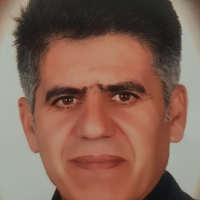Land Resources & Population Supporting Capacity in Tehran province
Abstract:
Desertification is a multifactorial phenomenon and relates to different aspects. Thus, this concept can be studied around multiple axes in natural resources and environment. Nowadays, the rapid growth and huge population in environments and ecological areas are of the most important concerns that have attracted the attention of experts and planners to the concept of desertification or combat desertification. On the one hand, astounding growth of metropolises and unbridled industrial development have led to adverse outcomes for the residents. Moreover, land is a limited resource and the situation will get worse over time in many countries due to the exponential growth of population and extensive use of land and with regard to the fact that only 5 million km2 of the earth has remained for sustainable utilization in future. There are many issues surrounding population supporting capacity based upon the quality of the land in order to maintain the sustainability of resources and environment. The purpose of this article was to estimate population supporting capacity of Tehran and Alborz on the basis of the potential of land units through the method introduced by Central Department of Agriculture of USA. This is the first step to determine the extent of land degradation and detection of man-made desertification. In the current situation, it is obvious that a demographic development of Alborz and Tehran provinces has led to instability in the environment and desertification. Based on the results, classes 1, 4 and 9 of the land quality covered 20.38, 14.93, and 37.44 percent of the surface area, respectively. These three classes could be accounted for 81.9% of population supporting capacity according to the potential of production. Our results showed that lands of the study area were exposed to desertification classified as very high risk (38.55 % of the total area), high risk (25.06 % of the total are), moderate risk (23 % of the total area), and low risk (13% of the total area). Accordingly, it was found that the current population of Tehran province was 5 times higher than the optimal population. This ratio also reaches 4.7 times in high-density areas such as Tehran, Karaj, Shahriar and Robat Karim.
Keywords:
Language:
Persian
Published:
Iranian Journal of Range and Desert Research, Volume:19 Issue: 3, 2012
Page:
498
magiran.com/p1108609
دانلود و مطالعه متن این مقاله با یکی از روشهای زیر امکان پذیر است:
اشتراک شخصی
با عضویت و پرداخت آنلاین حق اشتراک یکساله به مبلغ 1,390,000ريال میتوانید 70 عنوان مطلب دانلود کنید!
اشتراک سازمانی
به کتابخانه دانشگاه یا محل کار خود پیشنهاد کنید تا اشتراک سازمانی این پایگاه را برای دسترسی نامحدود همه کاربران به متن مطالب تهیه نمایند!
توجه!
- حق عضویت دریافتی صرف حمایت از نشریات عضو و نگهداری، تکمیل و توسعه مگیران میشود.
- پرداخت حق اشتراک و دانلود مقالات اجازه بازنشر آن در سایر رسانههای چاپی و دیجیتال را به کاربر نمیدهد.
In order to view content subscription is required
Personal subscription
Subscribe magiran.com for 70 € euros via PayPal and download 70 articles during a year.
Organization subscription
Please contact us to subscribe your university or library for unlimited access!


